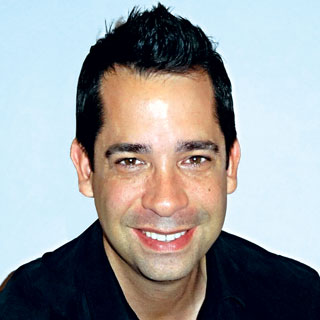
When is the last time someone cleaned the ice dispenser at your nurses’ stations? If you can’t remember, your facility may be at risk for health-compromising mold.
The inherent environment of an ice and cold water dispenser or ice machine – dark, damp interiors with exposure to bacteria through condensate drains and ice chutes – generates mold, slime and other biological contaminants inside the machine that eventually transcends to the ice.
If you’ve ever gone to a restaurant and the ice water tasted a little “funny” or black specks were visible in the ice, you may have been a victim of ice machine mold.
The common answer is to clean the mold out manually with sanitizing chemicals. But that increases maintenance costs an estimated $200 to $400 per unit depending on the severity of the mold growth. Mold can grow a large mold colony in an ice dispenser in as little as three months. Multiply a $400 cleaning cost times four annual cleanings and maintenance costs surpass $1,000 for just one machine.
Worse, that moldy ice machine could be the reason your facility doesn’t pass a health inspection even though everything else around it is spotless.
A Chicago hospital wasn’t passing ice dispenser health inspections and recently became the first hospital in the country to start installing newly-developed ultraviolet germicidal irradiation (UVGI) light kits inside. The UV kills biological growths and keeps the machines clean of mold. The slime in the condensate drain disappeared, as well as maintenance cleanings and failed health inspections.
While disinfecting nursing station UV systems is new, healthcare facilities around the country have been using UV for more than a decade inside all types of HVAC systems to prevent biological growth that can be distributed throughout the building’s air distribution system.
The bigger picture is disinfecting re-circulated air in the HVAC systems to fight the growing trend of healthcare acquired infections (HAI), such as VRE, MRSA and C. diff. Long-term care residents can become sicker when entering a facility due to an HAI.
The Centers for Disease Control and Prevention’s HAI Prevalence Survey estimates one in 25 hospital patients has at least one HAI. More than 722,000 HAIs in U.S. acute care hospitals occurred in 2011. About 75,000 U.S. hospital patients with HAIs died during their hospitalizations. The study didn’t break down how HAIs were acquired, but likely the HVAC systems were at least partially responsible for distributing airborne biological contaminants from one patient to another.
This is why healthcare facilities are looking to the lethal effects of UV disinfection, which scramble the DNA of viruses, bacteria and other infectious pathogens.
In another study from Airmid Healthgroup (AHG), UV lamp systems demonstrated airstream microbe inactivation in an ASTM/AHAM style environmental test chamber that simulated a typical building’s indoor environment and HVAC air handler arrangement. A single pass test was also performed on an ASHRAE Standard 52.2 test duct system. The test’s single-pass UV light system inactivation results were: Bacteria (S.epidermidis)-98.85%; Virus (MS2 coliphage) – 99.03%; and Mold (A.niger) – 78.80%.
The test, which simulated the typical indoor HVAC conditions of 73°F (23°C), 55% relative humidity and airflow velocity of 492-fpm (0.93m3/sec), was performed on a single pass. Experts claim even higher inactivity rates among the three tested microbes could occur in a multiple pass environment, such as the continual recirculation of air from a typical building HVAC system.
While the AHG study was performed in a test chamber simulating large rooftop units or air handlers that supply an entire building, in long term care facilities the UV manufacturing industry has been busy innovating products for smaller applications as well. This includes individual guest room HVAC systems. Chances are a guest room either has a self-contained packaged terminal air conditioner (PTAC) or an under window unit ventilator that is supplied steam, hot water and/or chilled water by the facility’s central boiler and chiller. Regardless, both styles have a fan that blows air across a coil to condition the air to the space’s set point temperature. Coils, especially during air conditioning season when they’re perpetually wet with condensation, attract mold and biological contaminants that need periodic removal. A UV light installation can circumvent those maintenance headaches, thus provide clean, healthy air to the living space.
Why do we want to spend money on UV equipment? UV saves maintenance costs, increases energy efficiency and may help save lives. While maintenance costs and energy efficiency equate to dollar value, there is no dollar value for saving lives or increasing quality of life by minimizing HAIs.
UV equipment capital costs are typically paid back in under a year in terms of reduced or eliminated maintenance costs. Maintenance requires a one-minute UV lamp replacement every one to two years. In contrast, coil cleaning can cost healthcare facilities thousands of dollars a year, depending on the number of units and their sizes. Also, residual toxic biocide chemicals on poorly-rinsed coils can affect resident respiratory systems and prematurely shorten the HVAC systems’ lifecycles.
Poorly maintained coils also suffer heat transfer inefficiencies. A bio film or heavier layer of mold effects heat transfer and increases static pressure in turn, reduces the HVAC system’s energy efficiency by up to 30 percent.
While viruses and infections are an accepted risk of entering a healthcare facility, UV disinfection can help minimize them.
Aaron Engel is vice president of business development at Fresh-Aire UV, North America’s largest manufacturer of carbon/PCO and UV indoor air quality products. He can be reached at [email protected] or 800-741-1195.



